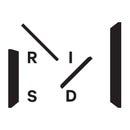Introduction: Making a Quill Pen
The quill pen, my favorite tool for ink drawing, was the standard tool for writing and drawing in Europe until the 19th century. Goose quills, particularly large (at least 10-inch) feathers taken from the edge of the wing, provide the ideal combination of flexibility and strength needed for fluent drawing that will not scratch the surface of the paper. This Instructable is part of a project I completed for the RISD Museum, for which I copied Luca Cambiaso’s drawing Deposition from the Cross (ca. 1570).
You can also read an article I wrote discussing my process for copying Luca Cambiaso 1570 drawing using a quill pen.
Written by Andrew Raftery (RISD faculty, Printmaking)
You can also read an article I wrote discussing my process for copying Luca Cambiaso 1570 drawing using a quill pen.
Written by Andrew Raftery (RISD faculty, Printmaking)
Step 1: Selecting a Quill
Once I choose a proper quill I strip the feathers from the bottom of the shaft to make the pen easier to handle.
Step 2: Scraping the Membrane With a Knife
The quill has a membrane covering the surface toward the tip. This is gently scraped off with a sharp knife.
Step 3: Finding the Bottom of the Quill Barrel.
At this point, I turn the quill so that the shaft arcs downward. I want to find the natural bottom of the quill barrel, the oval directed up and down.
Step 4: Finding the Bottom of the Quill Barrel and Making the First Cut
The pen is now ready to be cut. With the belly of the shaft facing up, the first cut takes off the tip of the quill at an acute angle.
Step 5: Removing the Quick
You will notice the quick within the quill. This must be removed.
Step 6: The Second Cut
The second cut follows the direction of the first, but is shorter and at a blunter angle.
Step 7: Cutting the Slit
A slit is cut into the center of the tip. This allows the ink to flow from the pen.
Step 8: Shaping the Pen
The sides of the pen can be trimmed to make a fine point or the tip can be trimmed to a chisel edge for broad, calligraphic lines.
Step 9: The Finished Pen
The pen can be trimmed and sharpened periodically during the drawing process, and with proper maintenance can last for many drawing sessions.











